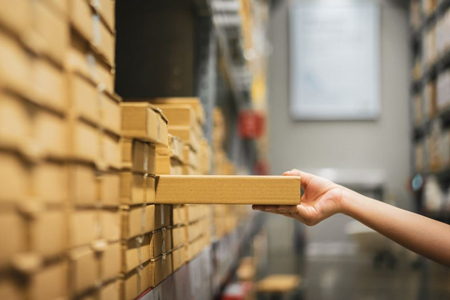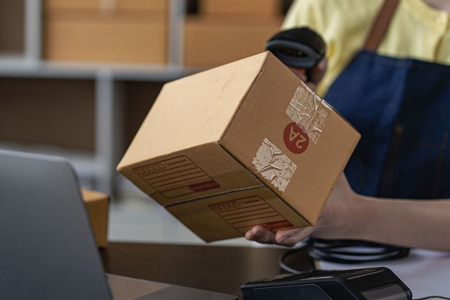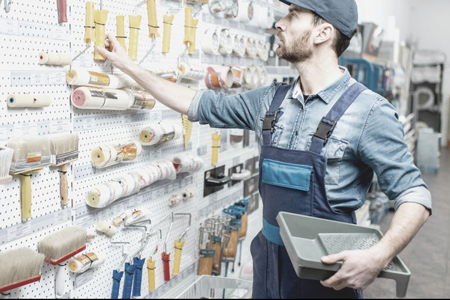Project Description

The role of the physical store has forever shifted and store-level omnichannel capabilities have quickly taken on new importance. Greatly impacted by the COVID-19 pandemic, many retailers were forced to quickly pivot in numerous ways, both strategically and operationally, to respond to shifting customer shopping expectations.
But this progress into true omnichannel models has been coming for quite some time. Your store footprint, associate interactions, and in-store experience used to be a competitive advantage over the “pure-plays” like Amazon. But with heightened customer expectations for omnichannel order fulfillment, coupled with a competing assortment of quickly available products from Amazon and other leading retailers, the instant gratification gap has been closed.
When the series of 2020 disruptions reached breaking points, North America and certain types of businesses were forced to shut down either completely, or establish a “revised” set of operating procedures. Consumers had to shift solely to online channels to continue to purchase many desired products; for retailers with omnichannel capabilities already in place, this shift was nearly seamless. However, for many retailers, with less robust omnichannel capabilities, inventory was likely locked up in stores and service levels were significantly impacted by reduced capacities in distribution centers.
As businesses and consumers began to emerge from disruption and shelter in place mandates, also emerging was a much higher acceptance and comfort level with online shopping, direct-to-consumer fulfillment, and curbside pickup. Customers have gotten used to not going into stores, and they demand even more convenient options.
Now is the time to evaluate and enhance your store-based fulfillment program and possibly consider expanding other store-level omnichannel capabilities. While there are many technical challenges to overcome, there are other critical considerations that must be addressed with the same level of intensity to ensure your program is successfully executed. In this point of view, we will discuss five key categories to realizing success with implementing store-level omnichannel capabilities.
Inventory Accuracy
Stores are notorious for inaccurate inventory. There are plenty of legitimate reasons—and just as many “self-inflicted” reasons as well. Regardless, the accuracy issue must be addressed to drive long-term success in a store-based fulfillment program like buy online, pick up in store (BOPIS).
Your customers are relying on your ability to follow through when you accept their orders to purchase products. They are looking to take the “risk” out of the trip to the store for items they want or need, as well as being able to potentially shorten the shopping experience if they are in a time crunch or have safety concerns. Customers assume that your acceptance of the order means it will be fulfilled.
If your inventory is not accurate, you face customer disappointment and eroded trust when you must notify a shopper that their order cannot be fulfilled—especially if this notification occurs after they think they’ve successfully completed the transaction. Further, the longer the time period between order placement and the notification, the more frustrated the customer. If this type of event occurs repeatedly, you may not only lose a customer wishing to transact this way, you might lose them for good.
All modern BOPIS systems include logic to protect from this problem, and it essentially works like safety stock. Once the perpetual inventory in a store drops to a pre-determined value (usually set up by category using velocity and other characteristics), the system prevents a customer from placing an order for that item by showing “out of stock” or “zero quantity available.” That’s certainly the right policy, because inventory—even very accurate inventory—is always in flux while the store is open for business. It’s important to account for the fact that customers shopping the store may have collected the very item you are presenting to customers online, making it impossible for the associate tasked with picking the item, even moments later, from successfully securing it.
The accuracy issue must be addressed to drive long-term success in a store-based fulfillment program like BOPIS.
The more inaccurate your inventory, the riskier it becomes to expose it, and the greater the buffer you must configure, which limits your ability to present items to customers shopping online. Further, the smaller the assortment, the less compelling the transaction becomes for the customer—meaning, if too many items fall below the “pick up today” threshold, a retailer risks customer abandonment.
Inventory accuracy is a constant battle. While stores will perform a physical inventory on an annual basis (a critical “true-up” process to establish a clean baseline), typical day-to-day activities erode that accuracy. Let’s explore two critical inventory changes the organization needs to address to increase the success rate of BOPIS.
Start with Accurate Counts
Before a store goes “live” with BOPIS or any other new order fulfillment process, conduct a complete physical inventory. This ensures the system has the most accurate version of inventory available to begin the new operation.
Maintain Accuracy with Standard Process Execution
This is a lot more complicated, and it really requires a deeper look at the inventory-related business processes currently performed in the store. Here are a few to review (and potentially adjust) before you go live with store-based fulfillment:
Operational Impacts
Now let’s discuss how the store will operate differently. Many store-level omnichannel capabilities such as BOPIS are services your store performs for your customer. Simply put, that means new responsibilities for the associates who work in your stores. While the process may be straightforward, near-flawless execution is critical to the success of the program.
You will need to assign at least one store associate responsibility for responding to online orders as they are received. As mentioned earlier, timing is extremely important not only because you’ve set an expectation with your online customers (in terms of how long they should expect to wait before arriving at the store to collect their products), but also because an open store means other shoppers, and the item ordered is always at risk of being sold to one of these customers. While this is not bad—it’s still a sale after all—it will impact the confidence your customers will place in your BOPIS program.
Once the order is picked in the store, the items must be placed in a secure location awaiting the customer’s arrival. The natural location is near a customer service desk. If this isn’t an option, a dedicated space in the back room is advisable. Further, when the customer arrives, associates will need to understand how to properly retrieve the items and ensure the order has been closed out as “fulfilled” in the system.
If the customer never arrives to pick up the items (after a pre-determined period of time), the order must be cancelled and the items should be returned to the shelf/sales floor—as well as systemically—to enable visibility to other customers (in-store and online).
Additional space may be needed to ensure items are not mixed and BOPIS orders are easily retrieved once the customer arrives.
The volume of the program will dictate the level of staffing required to properly execute the program. While a dedicated resource may not be required, order volume and response times must be monitored so adjustments can be made to ensure customer expectations are met.
Physical Store Changes
As indicated in the operational impacts section, it will be necessary to make some physical changes to the store to support your omnichannel fulfillment program. The most notable change is a dedicated area to stage items once they have been picked to fulfill orders.
Again, if your store has a dedicated customer service desk, this is also the most likely location you will direct customers to when they come to retrieve their order. Often returns are also accumulated in this area, so additional space may be needed to ensure the items are not mixed and BOPIS orders are easily retrieved once the customer arrives. The area must be kept orderly and efficient. A location in the back room may also be required for large or bulky products, and consideration must also be given for retailers whose assortment includes small, high value items that may require additional security measures. As the program grows, more space may be necessary, especially if customers are not picking up their orders in a timely fashion.
In addition to the dedicated staging area, you should consider including a location system (on the bins or shelves) to enhance the speed and accuracy of the associate taking care of the customer when they arrive.
A rudimentary method would be to arrange orders alphabetically by customer last name (as pharmacies have done with prescriptions for decades). As with the operational changes, the volume of the program will dictate the need for any additional level of sophistication. Because customers have chosen BOPIS for convenience, you must avoid customer delays due to not being able to locate or easily retrieve the item once the customer arrives.
Include proper signage in your rollout plan. You need to make sure your customers clearly understand where to go when they arrive at the store to pick up their order.
It’s also important to include proper signage in your rollout plan. You need to make sure your customers clearly understand where to go when they arrive at the store to pick up their order. This is particularly important in larger stores where it may not be obvious to the customer.
Finally, consider including a strategy for allowing physical distancing if necessary while the customer awaits the retrieval of their order. While this is not unlike how other operations in the store are impacted, it is a key consideration—especially if the area is shared with other activities such as returns or customer service.
Sound Master Data
Master data issues will impact the effectiveness of any system, as each transaction relies on data accuracy to perform correctly. Store-level omnichannel capabilities are no different. Inaccurate or incomplete master data, typically from the core merchandising system, may lead to mistakes in the fulfillment process. For this program, we will focus on the item master.
First, regarding the item itself, it’s important to make sure the correct identifier is used, typically the UPC or EAN code affixed to the item. This may be obvious, but the best way to make sure the correct item is picked is to force a scan of this code to confirm the item is secured. Second, an image (or two) of the item is also advisable, as this will help the associate more quickly locate the product in the store, especially in retail environments with large or quickly changing assortments or high associate turnover.
Next, programs like BOPIS may include a substitution process. Depending on the product category, you may want to offer the customer the option to allow the picker to substitute another item in the event the specific item ordered is actually not available (by the time the associate goes to collect the items). This is often the case in grocery fulfillment. The associate should be directed to substitution options that are viable for the item they are unable to exact match. Unless the master data is set up to provide such cross-references, the associate may be fending for themselves in a category with which they are not familiar.
Metrics
The last consideration is the key metrics that will measure the success of your store-level omnichannel capabilities. One group of metrics is intended to provide operational monitoring of the program itself, while others drive the core behaviors you wish to motivate within the stores.
Let’s begin with operational monitoring. These metrics are intended to allow leadership (both inside the store and out) to ensure the program is healthy and include:
Related to the last metric, there must also be a policy and process in place to handle abandoned orders, as this creates additional storage needs and adds to clutter. As an example, customers could have seven days to pick up a BOPIS order, after which the order is canceled, a refund is issued, and the item(s) are placed back on the sales floor (out of the BOPIS staging area). Of course, email reminders and even a phone call to the customer should be executed prior to order cancellation to avoid customer frustration.
The second group of metrics is to drive program alignment at the leadership level. All retail organizations are driven by a core metric—actual sales versus a plan. To that end, at least one, and maybe two metrics must be addressed, depending on your business model:
These are just a few of the potential metrics you’ll want to employ when the program gets rolling. They are invaluable to monitoring the success and some can even be used in a gamification strategy in friendly store competitions.
Final Word
Store-level omnichannel capabilities are no longer an option for the retail industry. With recent global disruptions prompting the necessity to be highly nimble, new or enhanced shopping and fulfillment methods have become essential to survival. While before recent disruptions, some capabilities like BOPIS may have added convenience and options to your customers, now they are table stakes to ensure your business can operate with minimal disruption. While implementing new capabilities requires a good bit of heavy lifting from a technology perspective, there are several aspects of the program that will impact the stores operationally.
Well-designed procedures, supporting systems, solid communication, and flawless execution of the new processes will not only drive higher sales, but this combination of tenets will also return foot traffic into your stores as customers come in to pick up their orders. By offering your customers flexibility in how they shop with you, you have not only delivered them enhanced value, but also provided an avenue for increased trust and customer loyalty.
The Parker Avery Group is a leading retail and consumer goods consulting firm that transforms organizations and optimizes operational execution through development of competitive strategies, business process design, deep analytics expertise, change management leadership, and implementation of solutions that enable key capabilities.








